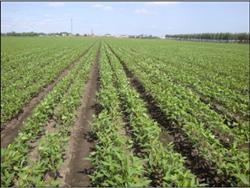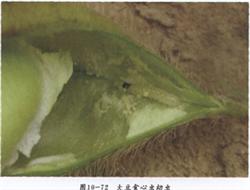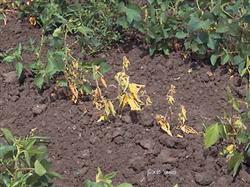Control of three soybean diseases

Soybean root rot: the disease can occur and cause damage throughout the growth period of soybean, with a yield reduction of 25% to 75% or more. The protein content of the damaged seeds decreased obviously, and the main symptom was that the dark brown disease spot appeared at the base of the stem and spread upward to the lower lateral branches, which made the pith of the diseased stem brown, the base of petiole constricted and the leaves drooping, but did not fall off. The main application of chemical control is 58% Ruidu Manganese Zinc or 72% Kelu wettable powder, the dosage is 0.3% 0.4% seed dressing. Soybean Sclerotinia sclerotiorum: soybean Sclerotinia sclerotiorum mainly infects the stem and begins to occur in late July. there are brown spots on the stems at the initial stage of infection, and then there are white cotton-like mycelium and white particles on the spot, and then turn black particles (sclerotia). In the longitudinal section of the stem of the diseased plant, the black cylindrical mouse fecal sclerotia could be seen, and the diseased plant was grayish white after death. Spray 50% sulfamethoxazole wettable powder 1000 times or 1000 times of Sclerotinia sclerotiorum or 50% methyl topiramate. Soybean gray spot: also known as spot disease, generally began to occur in the first and middle of June, and entered the peak period in mid-July. The disease of pods began from the tender pod stage, the grain filling stage was the peak stage, and the disease was serious in high temperature and rainy years from July to August. Mainly harmful leaves, when the disease is serious, almost all leaves are covered with disease spots, resulting in premature shedding of leaves, a yield reduction of 20% to 30%, and a decline in quality. Chemical control: in addition to sowing seeds with 70% dimethazone wettable powder or 50% thiram wettable powder according to 0.3% of the seed amount, 40% carbendazim glue suspension 1.5 kg per hectare was sprayed with 450 kg water.
- Prev

The harm of soybean heart borer and its control techniques
Soybean heart borer belongs to phosphoptera, small leaf moth family, alias soybean pod moth, bean pod worm, small red worm. When the larvae eat harmful beans into pods, the annual insect feeding rate is about 10%, and in severe cases, it can reach 30%, up to 80%, and affect the quality of soybeans and lower the grade. When the soybean heart borer comes out in the field.
- Next

The main reason of soybean flower and pod dropping
Soybean seedling blight is commonly known as "dead tree","damping-off" and "black root disease". In serious disease years, the death rate of plants in light disease fields is 5%~10%, and the death rate of plants in serious disease fields is more than 30%. Some fields even die completely, resulting in no yield. Field symptoms: soybean blight occurs only at seedling stage, seedling and young plant taproots and...
Related
- The first cup of black tea in spring, the flavor and history of tea gardens in Kenya, Africa
- The computer can not only choose potatoes, but also grow tea rice. AI will grow winter oolong tea champion.
- It is not only the inflated tea bitten by insects, but also engraved with the four seasons tea in Beipu.
- The Oriental Beauty Tea Festival in Zhuxian County takes the stage at the weekend to experience the plus-size feast of oil tea.
- & quot; Oriental Beauty Tea & Exploration of Emei in Hsinchu, the hometown of quot;
- The new variety of strawberry "Tainong 1" dessert is the first choice with mellow aroma. Crimson gorgeous
- History of Tea in Taiwan: from Wild Inner Mountain to Export Tea Garden
- Two types of Taiwan Oriental Beauty Black Tea won the British three-Star Award for Childhood Tea Xiang Zhang Jiaqi changed from pilot to champion tea maker.
- Banana species and varieties: the planting history of Taiwan Xianren banana and dwarf banana is long, is banana disease resistant?
- Coffee planting Technology: Qianjie Coffee from Seedling to harvesting

